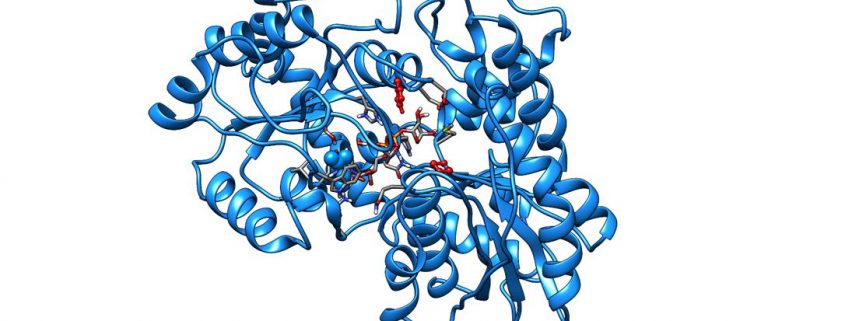Enzymatic Sweeteners as Tools for Biotech Applications
Louveau et al. investigate plant natural products in the large family of enzymes called arabinosyltransferases https://doi.org/10.1105/tpc.18.00641
Background: Plants produce a diverse array of natural products. These compounds have important ecological functions, providing protection against pests, diseases, and adverse environmental conditions, e.g. drought and ultra-violet light damage. They also determine important crop traits such as disease resistance and food quality. In plants, many natural products of these compounds contain sugars (i.e. are glycosylated). Glycosylation is important because it influences the stability and biological activities of these molecules. The most common sugar found is glucose, but other less common sugars can also be conjugated to plant natural products. The variety of glycosylated decorations observed on plant natural products is enormous.
Question: We wanted to understand how the unusual sugar unit arabinose is added to triterpenes. Triterpenes are a large and structurally complex family of plant compounds that commonly have one or more sugar chains.
Findings: We identified the enzyme responsible for addition of arabinose to the antifungal oat triterpene glycoside avenacin A-1 (AsAAT1). The addition of arabinose is critical for antifungal activity and disease resistance. AsAAT belongs to a large family of enzymes called glycosyltransferases. Most previously characterized members of this family add glucose. AsAAT1 is the first member of this family to be identified as able to add arabinose to a triterpene. Our understanding of the amino acids that determine sugar specificity enabled us to search for other arabinosyltransferases. This led us to identify a second arabinosyltransferase (GmSSAT) implicated in the biosynthesis of triterpenes that are responsible for the bitter taste of soybean.
Next steps: Our work provides new insights into the sugar specificity of plant natural product glycosyltransferases and opens up opportunities to harness these enzymes to generate ‘designer’ molecules for agricultural, medicinal and industrial applications.
Thomas Louveau, Anastasia Orme, Hans Pfalzgraf, Michael J. Stephenson, Rachel Melton, Gerhard Saalbach, Andrew M. Hemmings, Aymeric Leveau, Martin Rejzek, Robert J. Vickerstaff, Tim Langdon, Robert A. Field, Anne Osbourn. (2018). Analysis of Two New Arabinosyltransferases Belonging to the Carbohydrate-Active Enzyme (CAZY) Glycosyl Transferase Family1 Provides Insights into Disease Resistance and Sugar Donor Specificity. Plant Cell 30: 3038-3057; DOI: https://doi.org/10.1105/tpc.18.00641




